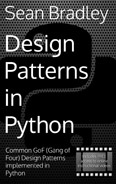Using tween.js with OrbitControls
Tip
This course no longer supports Tweenjs. Please upgrade to JEasings.
Description
In this example, I demonstrate using a mixture of the concepts demonstrated in the previous lessons GLTF Loader, Raycaster, tween.js and Orbit Controls.
The concept of moving the Orbit controls target was discussed and demonstrated in the Using tweens.js video lesson.
In this example, a glTF scene is imported and when you double-click the floor or monkey head, the Orbit Controls target tweens to the new position. See the onDoubleClick function in the code below.






























